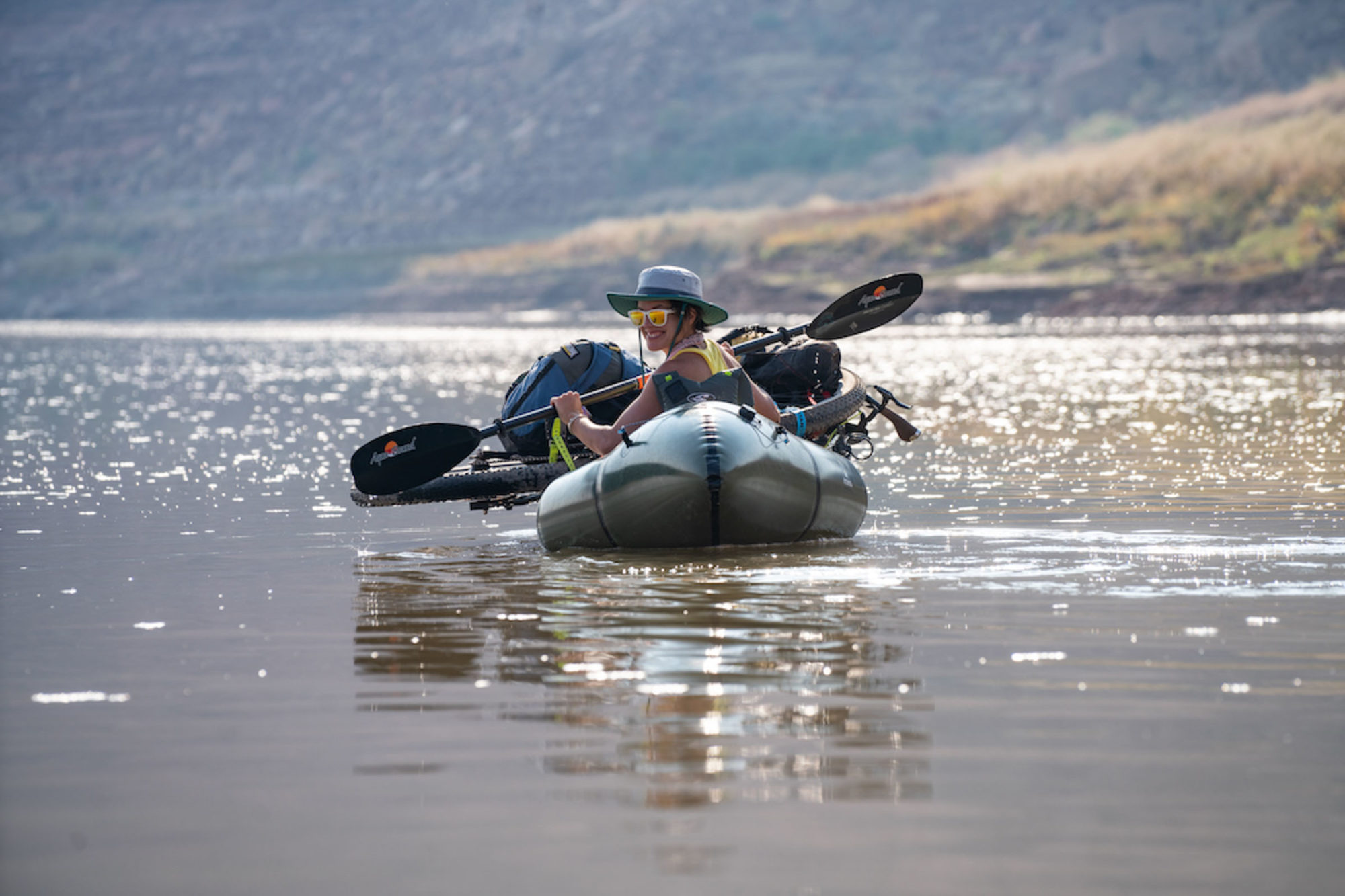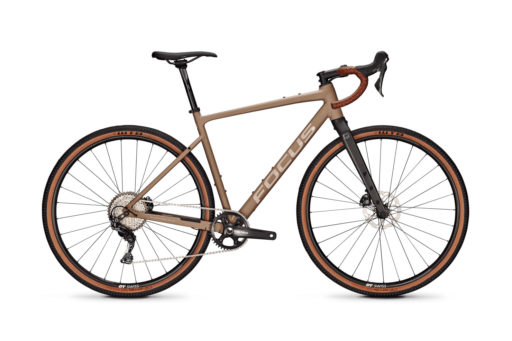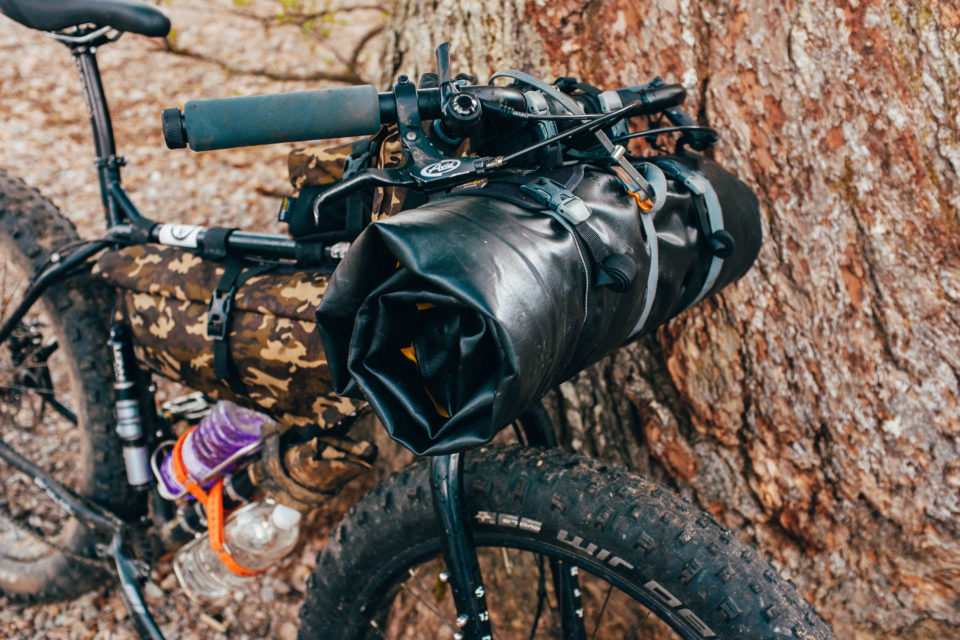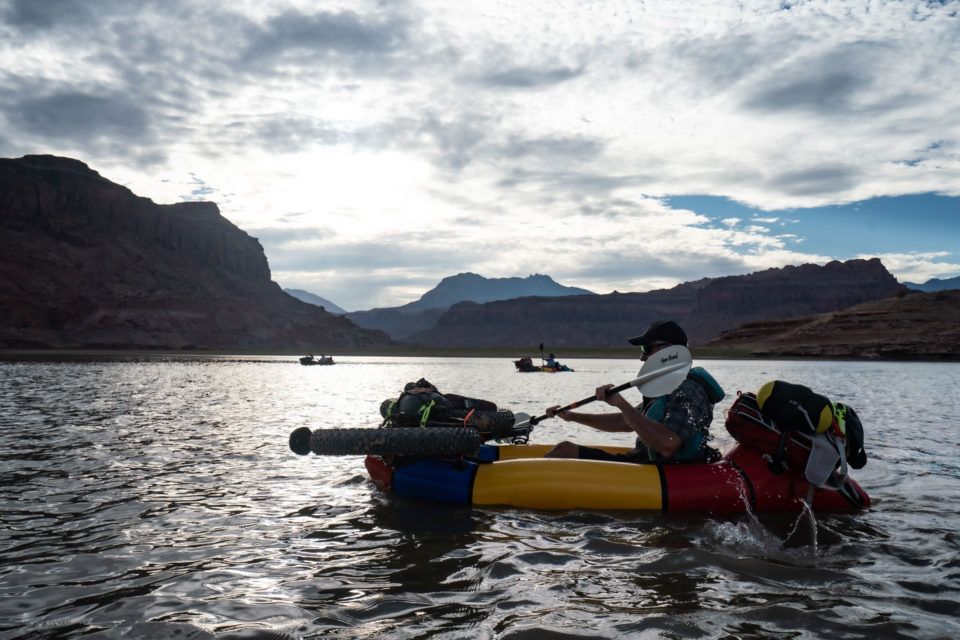Steve Fassbinder and Lizzy Scully have been working on a new bikerafting guide, with the help of over 20 other contributors, and they just launched an IndieGoGo campaign to make it happen. Find their launch video, an excerpt from the book, and other details about “The Bikeraft Guide: The Ultimate How-To, History Of & Wild Adventure Stories About Bikerafting” here…
Photos by Steve Fassbinder, Brett Davis, Jan Zdansky, and Nick Tyron
Merging packrafting with riding can open up a whole new world of possibilities, but there’s an obvious learning curve that most folks would have to overcome before heading out down the river—not to mention the challenges and risks associated with paddling in moving water. If you’re like me, you’re likely wondering how these folks are strapping their bikes to their rafts, what sort of PFD are they bringing with them, what makes a good bikerafting route, and lots more.
To address these questions, adventure photographer Steve “Doom” Fassbinder and outdoor journalist Lizzy Scully have teamed up on a book focusing on all things bikerafting, appropriately titled The Bikeraft Guide: The Ultimate How-To, History Of & Wild Adventure Stories About Bikerafting. The book includes an in-depth history of the sport, stories from and interviews with the major players (aka “The Pirates of Bikerafting”), and a comprehensive how-to guide.
They’ve launched an IndieGoGo campaign where you can preorder the book, score discounted gear from their sponsors, and grab some cool merch. Potential perks include limited edition stickers, T-shirts, a four-piece Aqua Bound paddle, Big Agnes gear, and guided bikerafting trips hosted by Steve’s company, Four Corners Guides. The preorder price for the book alone is $30 USD with an expected arrival date of May 2021—just in time for summer! You can find the IndieGoGo Campaign here.
Check out their launch video below, followed by an excerpt from Chapter 1: Hellbiking… It Wasn’t Called “Bikerafting” For a Reason (The 1980s) further down.
“People have been packing their gear onto two-wheeled, human-powered contraptions for well over a century, traveling hundreds of miles across the backcountry by bicycle to buy and sell goods, explore new places more quickly and efficiently, or just bask in the glory of nature. The birth of mountain bikes in the early 1980s made this easier to do, relatively speaking. But taking these bikes and lashing them onto small boats? Who started that, how did they do it, and why? And what even constitutes “bikerafting,” anyway?
In 1987, during the Alaska Mountain Wilderness Classic (as reported by Ben Summit on the “Classic Report” blog), Hank Timm and Randy Pitney “blew all the competition out of the water and the mountains with a collapsible canoe on mountain bikes, wheeling it east instead of west and winning by 17 hours on a route twice as long as everyone else’s.” Did this adventure qualify as “bikerafting”? Perhaps not, but it was a start.
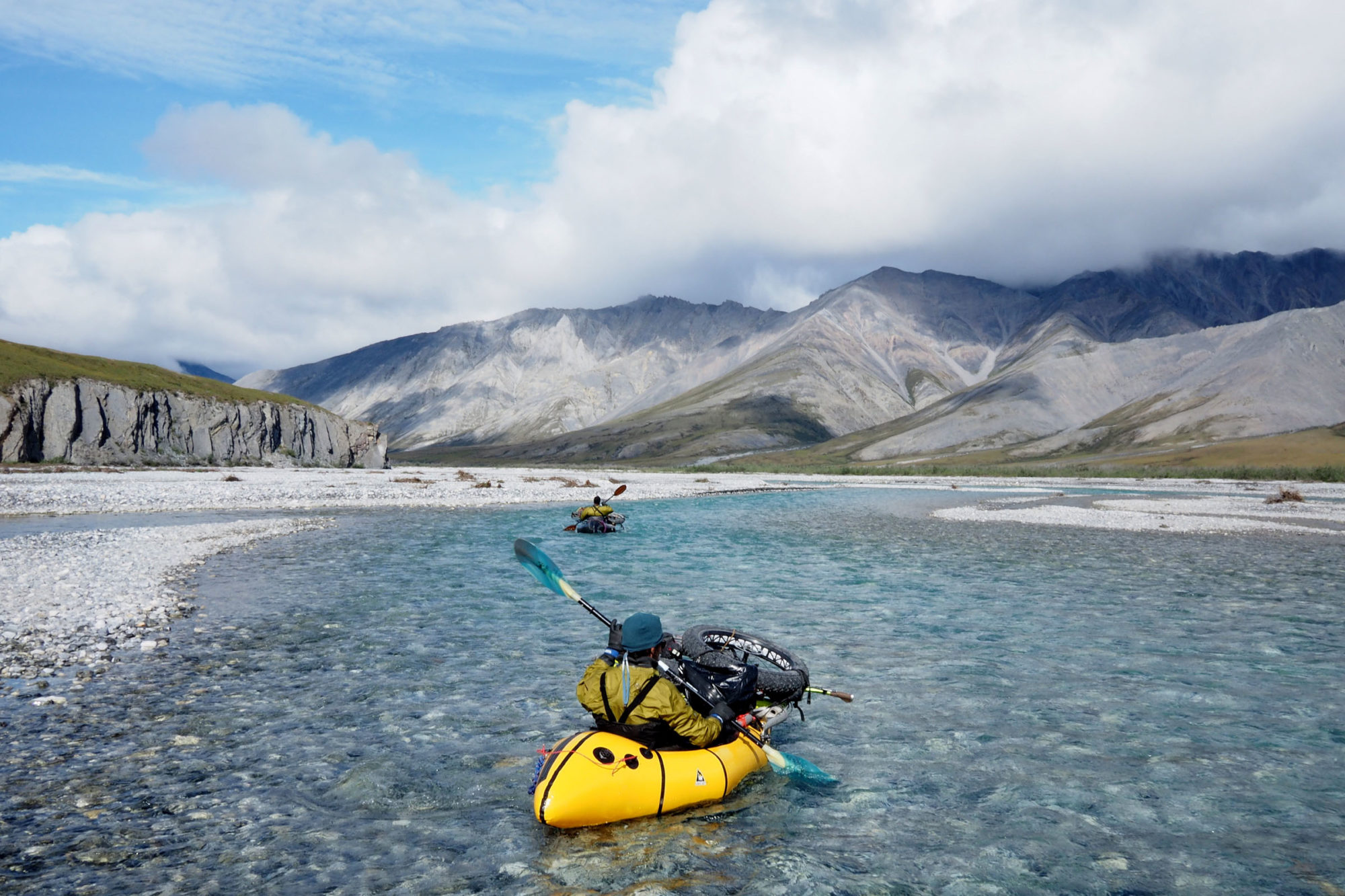
How about floating down New Zealand’s Whanganui River on inflated truck inner tubes? In 1988, three irreverent brothers—Paul, Simon and Jonathan Kennett—rode an abandoned, barely passable, never-pedaled “path,” and then put their bikes onto their makeshift inner tube “raft” in order to float downriver to access their next doubletrack. This was a key moment in the genesis of bikerafting.
The Kennett siblings accomplished this harebrained feat just one year after Roman Dial embarked on his first “Hellbiking” adventure. Hellbiking, according to Drew Walker, writing for Adventure Cyclist in 2001 about a trip he did with Roman to Talkeetna, is when one treks, “across untracked wilderness, using only a topo map and compass, in a place too big to fit in the Lower 48.” It’s the ultimate expression of bicycle power, he writes, whereby the rider relies on nothing but what he can carry through vast swaths of wilderness; in this case food, the bike, some key camp gear and a packraft. However, at this point, the packraft, though indispensable, played a small part in the overall storytelling. It simply ferried gear and bikes across bodies of water.
Roman did carry at least one packraft to ferry gear on about a dozen Alaska adventures and even one trip to the American Southwest. In 1988, he crossed the Wrangells from Nabesna to McCarthy using one boat for three people (250 miles). The packraft earned barely a mention in the story he subsequently wrote for Mountain Bike mag: “Thirty-five miles that reached back over a glacial pass, through shin-deep snow, past crevasses, over hideous moraines, through bad brush, and across a river demanding multiple ferries of bikes, men and gear in a four-pound, five-foot nylon packraft…”
In 1989, he did two more bike trips carrying packrafts. He traveled the length of the Denali Fault in the Alaska Range riding on the glaciers (150 miles). And he paddled and pedaled from Whitmore Wash to Diamond Creek on the Grand Canyon. On the former trip, he again used only one boat for three people, but on the latter he actually also used packrafts to get downriver. Of that trip, David Roberts writes in his book, Escape Routes.
“In 1989, with two cronies he would prefer to keep anonymous, Dial biked illegally from the north rim of the Grand Canyon down to the Colorado River, inflated a trio of packrafts, floated 45 miles over two days without a permit, then biked up to the south rim in the dark. ‘It was an outrageous trip [Roman told him]. On the river we ran into a group of guides doing their own trip. ‘You guys have a permit?’ they asked. ‘You bet we have a permit.’ They thought it was hilarious. ‘You better hurry,’ they said, ‘because the Perk Service is a day behind you.’ Because of that worry, it wasn’t as much fun. We couldn’t play in the rapids.’” ~David Roberts
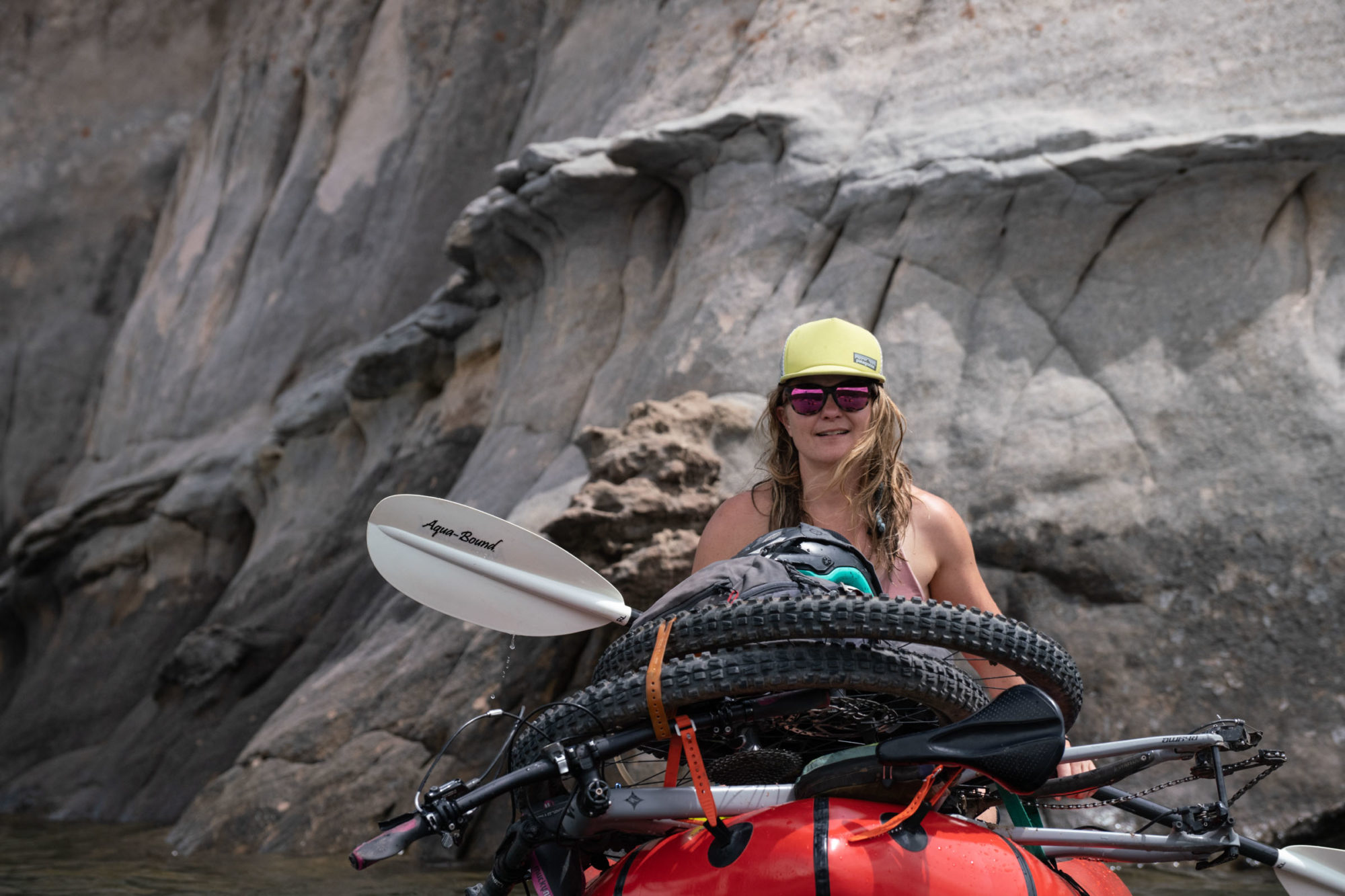
Did other explorers pair bikes and lightweight boats they could also carry in the ‘80s or even earlier? Maybe after this book comes out, unknown “bikerafters” will come out of the woodwork to share their stories in hopes of reaping belated glory and riches. (Well, glory, anyway) Nevertheless, for the sake of historical record, we expound upon the following tales as the earliest known evidence of people putting two-wheeled contraptions on small, inflatable, floating thingies, and hereby enter them into the canon of bikerafting origin stories.”
Want to see more bikerafting? Make sure to check out our Beginners Guide to Bikerafting and other bikerafting-related articles and stories here.
Please keep the conversation civil, constructive, and inclusive, or your comment will be removed.






